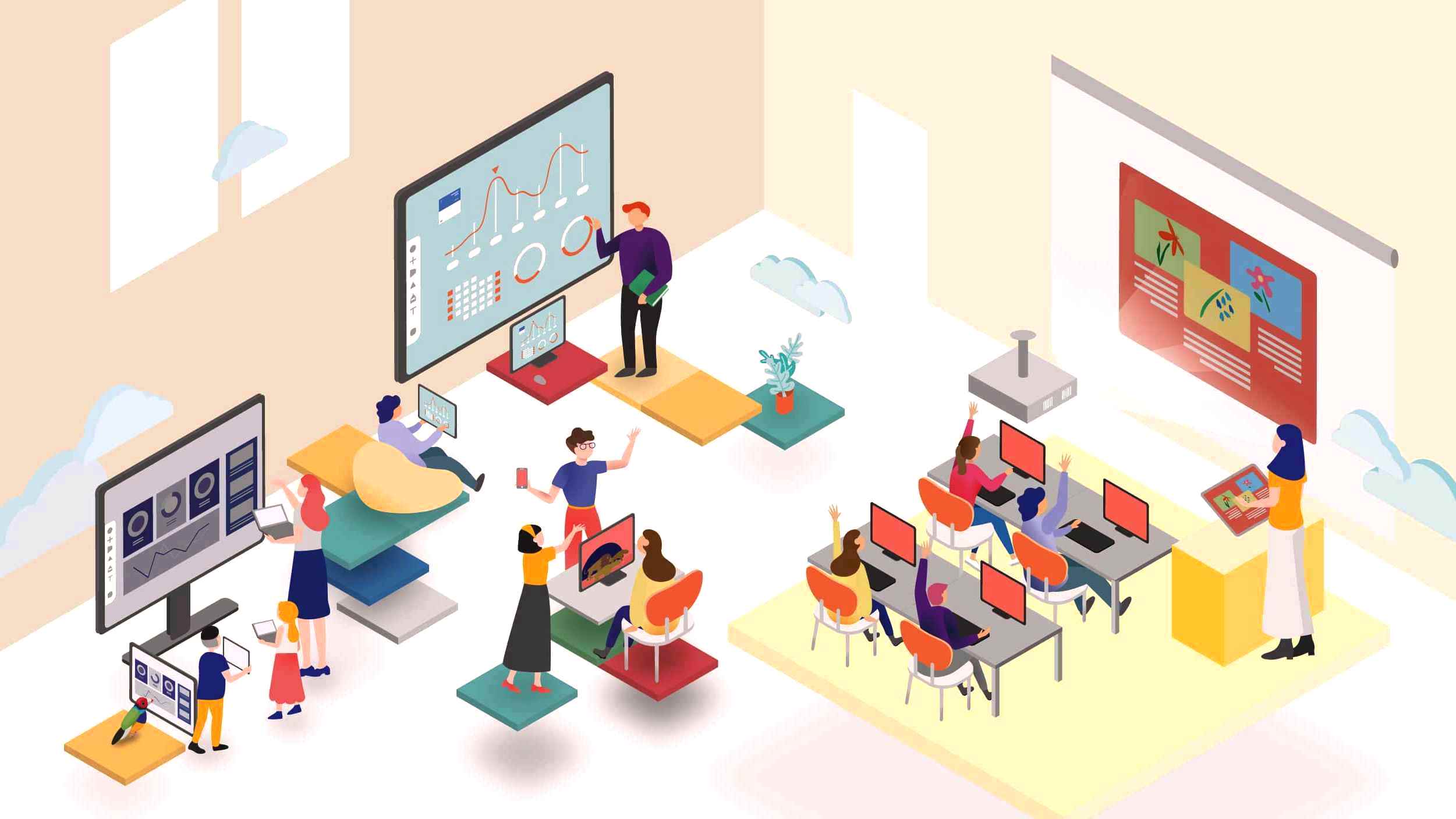The Evolution of Educational Technology in the Modern Classroom

Introduction: The Digital Transformation of Education
In today’s rapidly evolving educational landscape, tech has become an indispensable component of effective teaching and learning methodologies. The integration of digital tools into classrooms across the globe represents one of the most significant shifts in educational practices in recent decades. As schools continue to adapt to an increasingly connected world, the relationship between technology and pedagogy grows more intricate and essential. This transformation isn’t merely about introducing devices into classrooms; it’s about fundamentally rethinking how education can be delivered, experienced, and optimized through technological innovation.
Historical Context: From Chalkboards to Chromebooks
The Pre-Digital Classroom
Before the digital revolution, educational tools were predominantly analog. Chalkboards, overhead projectors, and printed textbooks formed the cornerstone of instructional materials. While these tools served their purpose effectively for generations, they presented inherent limitations in terms of interactivity, personalization, and access to information beyond the classroom walls.
The First Wave of Educational Technology
The 1980s and 1990s marked the beginning of computer integration into educational settings. Computer labs became common in many schools, though technology remained largely separate from day-to-day classroom activities. Educational software, while revolutionary for its time, was often limited in scope and functionality compared to today’s standards.
The Modern Educational Technology Ecosystem
Accessibility and Equity Concerns
The rapid proliferation of classroom technology has raised important questions about digital equity. While many students benefit from cutting-edge educational tools, others from underserved communities risk falling behind in what has been termed the “digital divide.” Addressing this inequity requires conscious effort from policy makers, school administrators, and teachers alike. Creating inclusive technological environments demands thoughtful implementation strategies that consider the diverse needs and circumstances of all students, regardless of socioeconomic background.
Hardware Evolution in Educational Settings
The devices used in educational contexts have evolved dramatically. From desktop computers to laptops, tablets, and smartphones, the portability and functionality of educational hardware continue to expand. Interactive whiteboards, document cameras, and 3D printers have further enriched the technological landscape of modern classrooms. This hardware diversity allows for more flexible and varied approaches to teaching and learning.
Software and Platform Development
Educational software has undergone a remarkable transformation, moving from standalone programs to sophisticated cloud-based platforms. Learning management systems (LMS) now serve as centralized hubs for course content, assignments, assessments, and communication. Adaptive learning software can customize content based on individual student performance, providing personalized learning paths at scale. These advancements enable educators to gather detailed analytics on student progress and engagement, facilitating more informed instructional decisions.
Pedagogical Implications of Educational Technology
Blended Learning Approaches
The integration of technology has given rise to blended learning models that combine traditional face-to-face instruction with online components. This approach offers flexibility while maintaining the benefits of in-person interaction. Flipped classroom methodologies, where students engage with instructional content at home and participate in collaborative activities during class time, have gained popularity as effective uses of educational technology.
Project-Based and Collaborative Learning
Digital tools have expanded possibilities for project-based learning and collaboration. Students can now work together on shared documents, presentations, and other creative endeavors regardless of physical location. This collaborative capacity extends beyond classroom walls, allowing for connections with peers and experts worldwide. Such experiences better prepare students for workplace environments where remote collaboration has become increasingly common.
Personalized Learning Pathways
Perhaps one of the most significant impacts of educational technology is the ability to personalize learning experiences. Adaptive platforms can assess student knowledge, identify gaps, and recommend appropriate resources or activities. This individualization helps address the reality that students learn at different paces and may require varied approaches to master the same content.
Challenges and Considerations
Implementation Barriers
Despite its potential benefits, educational technology implementation faces numerous challenges. Infrastructure limitations, including inadequate internet connectivity, can hamper technology adoption, particularly in rural or underfunded districts. Professional development for educators remains essential but often insufficient, leading to underutilization of available tools. Additionally, the rapid pace of technological change creates difficulties in long-term planning and investment.
Digital Citizenship and Wellness
As students spend more time in digital environments, teaching responsible technology use becomes crucial. Digital citizenship education helps students navigate online spaces safely and ethically. Meanwhile, concerns about screen time and digital wellness have prompted educators to consider balanced approaches to technology integration that promote healthy habits and relationships with digital tools.
Assessment and Evaluation in Digital Contexts
Technology has transformed assessment practices, offering new methods for evaluating student learning. Digital assessments can provide immediate feedback and adapt to student performance in real-time. However, ensuring academic integrity in digital environments presents ongoing challenges. Finding the right balance between innovative assessment approaches and maintaining educational standards requires continuous evaluation and adjustment.
Future Directions in Educational Technology
Emerging Technologies in Education
Several emerging technologies show promise for further transforming educational experiences. Virtual and augmented reality applications can provide immersive learning environments that make abstract concepts tangible. Artificial intelligence and machine learning continue to enhance adaptive learning platforms and administrative efficiency. As these technologies mature, their educational applications will likely expand and evolve.
The Future Classroom Design
Physical learning spaces are being reimagined to accommodate and enhance technology-enabled learning. Flexible seating arrangements, charging stations, and collaborative work areas reflect the changing nature of technology-integrated education. The concept of the classroom itself continues to evolve, potentially extending beyond traditional school buildings to include virtual environments and community spaces.
Conclusion
The relationship between technology and education continues to deepen and evolve, presenting both remarkable opportunities and significant challenges. When implemented thoughtfully with clear pedagogical objectives, educational technology can enhance teaching effectiveness and student engagement. As we move forward, maintaining a balance between technological innovation and sound educational principles will be essential for maximizing the benefits of digital tools in learning environments. The most successful educational technology implementations will always prioritize the fundamental goal of education: supporting student growth and development in all its dimensions.
